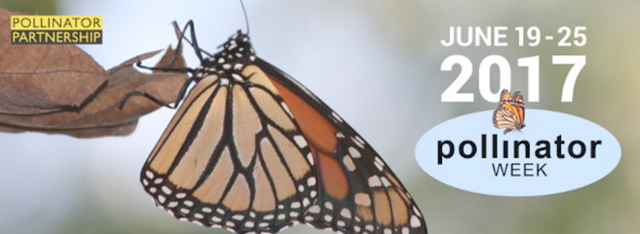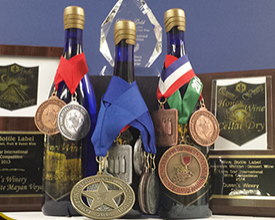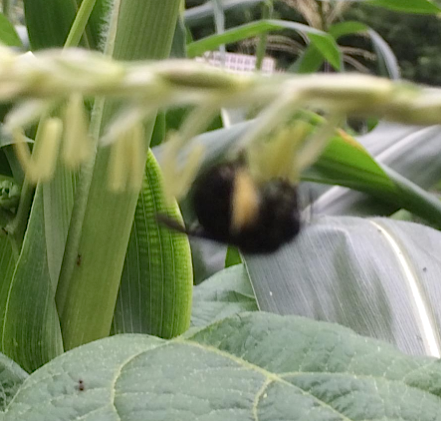
Ten years ago the U.S. Senate’s unanimous approval and designation of a week in June as “National Pollinator Week” marked a necessary step toward addressing the urgent issue of declining pollinator populations. Pollinator Week has now grown into an international celebration of the valuable ecosystem services provided by bees, birds, butterflies, bats and beetles.
The Pollinator Partnership is proud to announce that June 19-25, 2017 has been designated National Pollinator Week by the U.S. Department of Agriculture and the U.S. Department of the Interior.
__________________________________________________
Celebrate pollinators by joining a Webinar Listening session on June 28
This session is hosted by the USDA National Institute of Food and Agriculture to discuss a strategy to monitor native bees in the USA. Details here: https://www.federalregister.gov/documents/2017/06/05/2017-11554/national-monitoring-plan-for-native-bees-stakeholder-and-public-listening-session
Dave Hunter from Crown Bees will be at this meeting and has been allotted five minutes to answer three questions:
1. Why is a national monitoring plan for native bees important?
2. What kind of information/data is needed?
3. How would the information be used?
_________________________________________________________
Domestic (European Honeybees), Feral (Migratory bees), and Native Bees
In my opinion, we can say the European honeybee is inefficient, carries diseases and doesn’t play nice with other pollinators. If that’s not enough, the European honeybees are also not as efficient as other bees at pollinating crops.
Recent research has shown that there’s even a difference in the way domestic and feral honeybees pollinate flowers. A study of apple orchards found that yield increased only when native and feral bees were the ones doing the pollinating, mostly because of their foraging practices. While domestic bees traveled through trees and gravitated toward the areas with the largest flower clusters, wild bees foraged and pollinated equally across the board. This produced a higher yield and a better quality of fruit. [Source:
http://knowledgenuts.com/2015/08/24/the-important-difference-between-feral-and-domestic-honeybees accessed 06/21/2017]
__________________________________________________________________
Nomenclature for Bees
We have such a mishmash of nomenclature for bees and it varies from article to article. Here is my own clarification for my readers:
- Domesticated European Honeybee—These are the bees that beekeepers manage in hives. They produce honey that is sold commercially. They were brought to the USA from Europe several hundred years ago.
- Wild bees—This term is particularly confusing as it can refer to native bees, none of which make honey beyond the tiny bit they need for their eggs, and it can be interchangeably used to mean feral honeybees who do make lots of honey.
- Feral Honeybees - These are European honeybees that have escaped the hive and have been living on their own for years in the wild in riparian areas and also in places like the walls of homes. Unlike the native bees, these bees produce honey.
- Feral bees are also called native bees.
- Native bees – Native bees are bees that are native to North America. According to the Xerces Society, we have over 4,000 species of these bees. With the one exception of the bumblebee, our native bees are solitary creatures that are typically ground nesters. You won’t be getting any honey from these busy workers but they are incredibly efficient and important when it comes to pollinating our gardens and crops.
- Migratory bees – In recent years, to add to the confusion, this term has appeared in the literature. Migratory bees are European honeybees that are commercially managed to pollinate crops. Their hives are moved/rented out to farmers who need a crop pollinated. A farmer in California may need an almond crop pollinated. Then that hive might be moved to Florida to pollinate an orange crop.
_____________________________________________________________
BEES AND HONEY ON THE LOCAL SCENE IN GARLAND TEXAS
Here in Garland, Texas we have a whole lot of interaction with these creatures. To name three: Queens Winery; thousands of native and European honeybees at the Garland Community Garden; and Cheryl's wall (Story of the recent removal of 10,000 feral honeybees from a Loving Garland Green member’s home).
__________________________________________________

Award-winning Garland wine—made from honey
Queens Winery – Garland, Texas
3433 W Kingsley #6 Garland TX 75041
http://queenswinery.com
Kosher wine made from honey. Here is one of their descriptions of their special wine:
“It starts with a big rich honey flavor, then transforms from the sensation of tasting honey to drinking chocolate and finishes with just a whisper of spiciness. Then your toes curl, and your eyes roll into the back of your head and you look for something stable to grab onto.”
_______________________________________________________

Bumblebee buzz pollinating corn at the Garland Community Garden
Garland Community Garden
Down at the garden we support both native bees and European domestic honeybees. We have a hive for the European honeybees that is maintained by a group of professional beekeepers and we have little native beehives scattered through out the garden. We also hold classes once a year on the topic of native bees.
Throughout the spring we have observed the presence of a lot of native bees (mainly bumblebees, sweat bees and mason bees). It would appear that our European domestic honeybees are playing nicely with their American cousins.
However, I am watching closely the population of native bees closely. So far, over the three years we’ve been down there I’ve seen their population increase each year. At one point this late spring I counted 22 bumblebees in our corn patch.
A recent Swedish study concluded that European honeybees had reduced the bumblebee population in that area by 81%. However, landscape heterogeneity drastically modified this effect. In simplified homogenous landscapes where flower-rich habitats have been lost, fewer bumblebees were found. No effect was found in heterogeneous landscaped areas. Once again: diversity of plant and human life is key to survival of us all.
______________________________________

CAN BEES READ? Sign at the home of Loving Garland Green member, Cheryl Andres hung long before she realized they had taken up residence in an outside wall in her home.
Feral Honeybees Removed from Loving Garland Green Member’s Home
Cheryl Andres recently had issues with feral honeybees who took up residence in the wall of her home. Following are photos and Cheryl’s report of this incident.

Took 6 hours of vacuuming and scooping them into buckets but the "grand extrication" got an estimated 10,000 bees out of my garage wall!

Honey was delicious but since it was a new hive most of the combs went with the beekeeper so the bees would have something to sustain themselves through the winter, after which they can usually start harvesting it for human consumption.
So my bees have a purpose now - their genes will help in this young man's quest to restore bee bloodlines to a classic, feral (presumably more healthy) state. Even his helper remarked how very calm and well adjusted they were - which thankfully translated to a lower cost to remove them.
This is what I get for hanging this cute garden flag found on sale - who knew the bees would take it as a "Bees Welcome" sign?